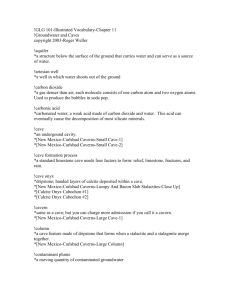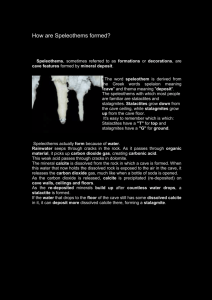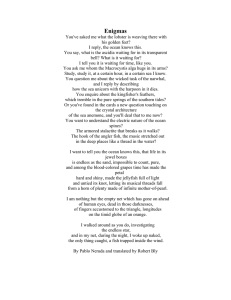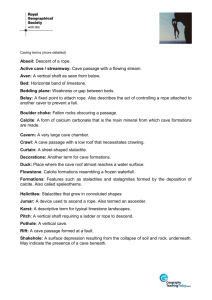Geology: Climate Change and Human Societies Exercise 2 Stalagmites
advertisement
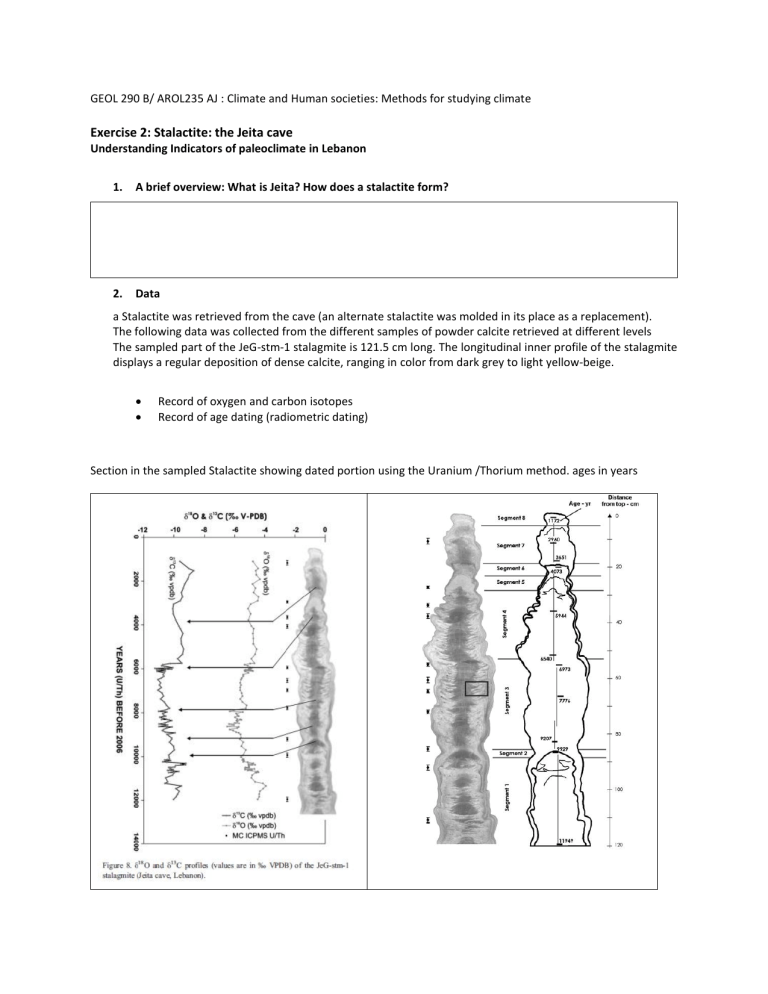
GEOL 290 B/ AROL235 AJ : Climate and Human societies: Methods for studying climate Exercise 2: Stalactite: the Jeita cave Understanding Indicators of paleoclimate in Lebanon 1. A brief overview: What is Jeita? How does a stalactite form? 2. Data a Stalactite was retrieved from the cave (an alternate stalactite was molded in its place as a replacement). The following data was collected from the different samples of powder calcite retrieved at different levels The sampled part of the JeG-stm-1 stalagmite is 121.5 cm long. The longitudinal inner profile of the stalagmite displays a regular deposition of dense calcite, ranging in color from dark grey to light yellow-beige. • • Record of oxygen and carbon isotopes Record of age dating (radiometric dating) Section in the sampled Stalactite showing dated portion using the Uranium /Thorium method. ages in years Your analysis 1) Methodology of analysis 2) Qualitative interpretation 3) Highlights (2 to 3 important food for thought) References and more information • • AUB Geological Museum: Formation of stalactite: https://www.youtube.com/watch?v=4iALajWbf7w S. Verheyden, F.H. Nader, H.J. Cheng, L.R. Edwards, R. Swennen. Paleoclimate reconstruction in the Levant region from the geochemistry of a Holocene stalagmite from the Jeita cave, Lebanon. Quat. Res., 70 (2008), pp. 368-381 (Verheyden et al., 2008

